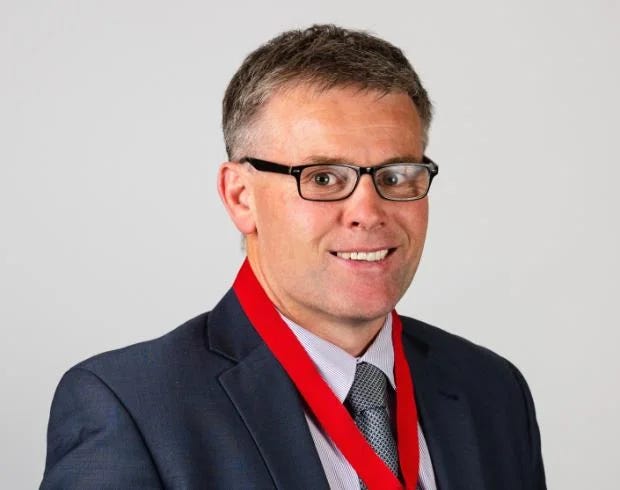A vital 25km stretch of road that continues to spark angst
“We need to put the investment case forward and keep banging on the door.”
Get each of our Southland Tribune editions sent to your email inbox.
In the overall makeup of the 2000km of State Highway 1 - from the top to bottom of New Zealand - it is unsurprising that it’s hard to drum up national attention around a 25km section of it.
But the importance of that 25km should not be underestimated. It is the stretch of road from Invercargill to Bluff.
It is close to 1000km from where the bureaucrats and politicians reside in Wellington, if we are ging to be a little facetious for a moment.
The sound of people lamenting the ‘poor condition’ of the Invercargill to Bluff highway is growing louder by the day.
And the importance of that 25km isn’t lost on many. Not simply because it provides the only route in and out for the residents of Bluff.
It is also a vital stretch of road for Invercargill and the wider region’s economy, given is the sole roading connection to and from the port in Bluff.
It’s importance economically also appears to be the reason behind the worsening condition of the stretch of State Highway 1, given the amount of heavy vehicle traffic it takes on a daily basis.
Invercargill City Council mana whenua representative and Bluff resident Pania Coote gets a regular firsthand look at just that.
“This morning as I left Bluff I passed - between the entrance to the new wharf and up to Fowler Oysters - seven trucks. And I’m not talking wee trucks, I’m talking truck trailers and there was only one single axel truck, which was a courier.
“This was just leaving Bluff. As I moved on to Invercargill I passed another two trucks that were coming to Bluff.
“These trucks - and the size of these trucks - must have an impact on our roads,” Coote said.
Coote’s concerns is a continuation of calls from southern leaders that the state of the Invercargill-Bluff highway needs addressing.
That is the role of Government agency Waka Kotahi NZ Transport Agency.
Earlier this year the Government announced it had committed $20 billion in funding for 15 roading projects “of national significance”, but none of that money was earmarked for projects south of the Waitaki.
In March the Invercargill council agreed to pen a letter to the appropriate minister raising concerns around the state of the Invercargill-Bluff highway and outlining the importance that stretch of road has for Invercargill and Bluff, and the wider Southland economy.
At the time Invercargill City Council infrastructure group manager Erin Moogan also said they met with Waka Kotahi NZ Transport Agency representatives with the Bluff-Invercargill highway topic raised.
They were advised there was work in the pipeline to raise the road in the area approaching the estuary, but at that stage that was the only work planned from Invercargill to Bluff.
Six months on and the matters continues to spark angst in the deep south and gets raised at various council meetings.

Last week Cr Grant Dermody suggested regional development agency Great South might need to take up an advocacy role around making a case for roading in Southland.
Dermody said the region needed to make a case because at that moment “it was disappearing up north”.
“The South Island has missed out on the priority list for roading and if you ask [Southland District Council] it is probably one of their biggest pieces of importance.
“They’ve got the second biggest piece of roading infrastructure in New Zealand,” he said.
Dermody said that investment in infrastructure was important for the region around helping developing industries, whether it be agriculture, the continuation of the smelter at Tiwai Point, or others.
“Open Country is growing… So that is going to put more pressure on our roads.
“You could see that as, ‘that’s not good’, but it is really great because it employs people. But you can’t have underinvestment by Central Government in it.
“We need to put the investment case forward and keep banging on the door.”
Invercargill Mayor Nobby Clark conceded much of the lobbing of the Government, on the likes of the Invercargill-Bluff highway, would probably get little traction.
He felt there was probably better use of Great South’s resources on other matters where they could get some victories.
“We could bang on here for the next five years about the importance of the highway to Bluff, which has got the heaviest truck loading of any piece of roading in the country - No 1.
“But elections are not won and lost here in Southland, they are won and lost on light rail in Auckland and second harbour bridges, all of that sort of stuff.
“Unfortunately, that is the realistic fact of life. It frustrates the hell out of me because what we contribute to the economy and get back in return is not the same.”








The state of the road is really quite dangerous for motorcyclists (heavy ruts and potholes) and needs to be addressed immediately to avoid a nasty accident.
The comments from the elected people say a lot about why this road is the mess it is. Maintenance like their views has become reactionary rather than proactive. This started from the days when we once had the MOW doing highway maintenance and Southland boasted some of the best highways in NZ. But the rightwing lobby decided private business needed to get in on the act so the MOW was disbanded and road maintenance become about profit rather than performance and we have seen years of degradation now coming to haunt us. The Bluff highway is only one part, the Riverton highway has also become a death trap as the road surface gets slippery and holds water.
At the Greenhills overbridge they have dug up the same bit of road several times to try and fix a problem with the road surface. On North Road out Waikiwi they have been digging up the same part of the road once again to try and fix ongoing issues for about the tenth time.
No one seems to understand that doing the same thing over and over again expecting a different result is a sign of lunacy.
Like was once done with the National Roads board, Invercargill councilors should be put in a bus and driven over the highways once a year and see what is going on and let them build a picture. Reacting to the number of trucks you see today doesn't solve anything. Nor does sitting around a table talking about it.